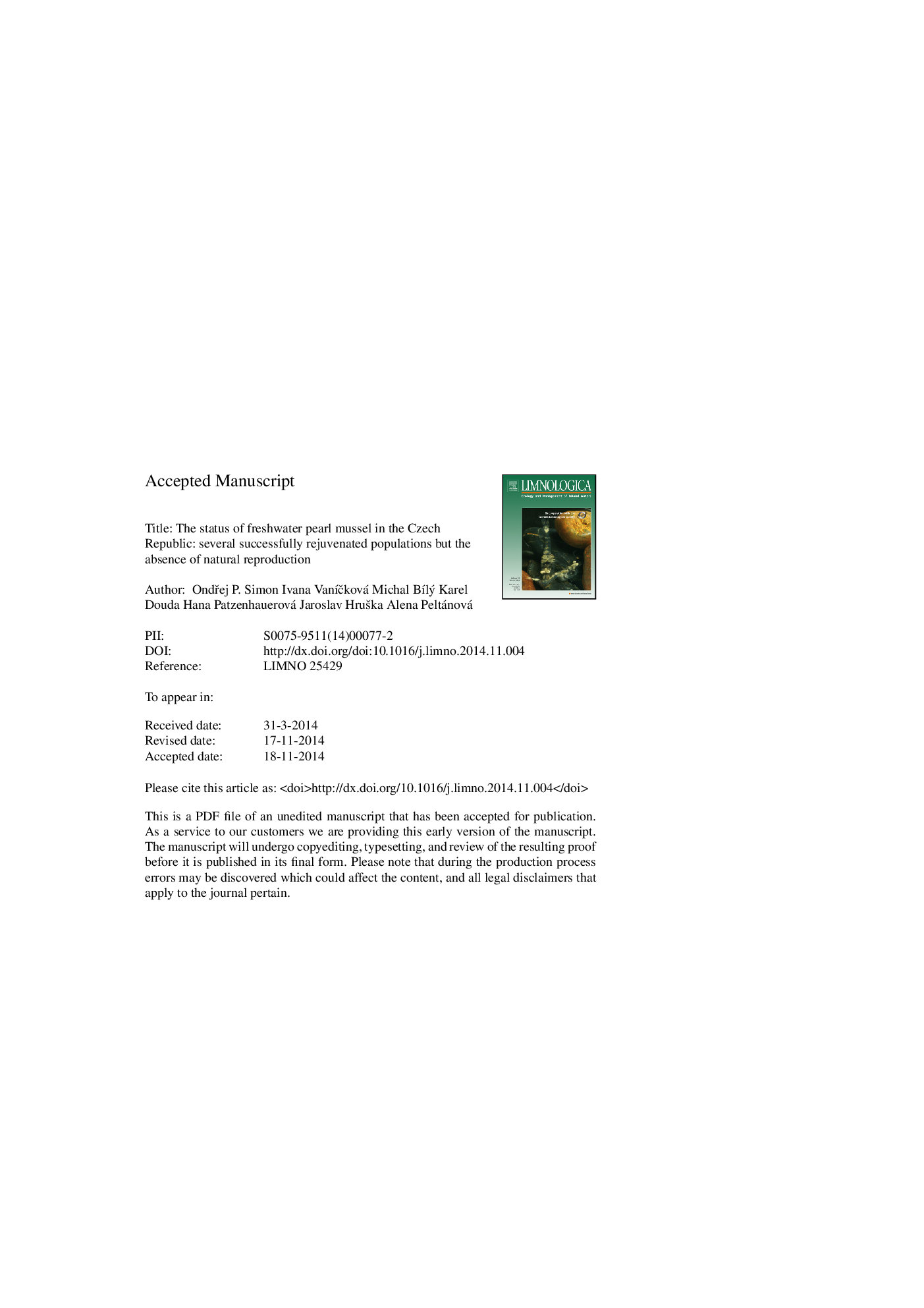| Article ID | Journal | Published Year | Pages | File Type |
|---|---|---|---|---|
| 6305568 | Limnologica - Ecology and Management of Inland Waters | 2015 | 23 Pages |
Abstract
The freshwater pearl mussel was historically abundant in many streams and rivers in the Elbe, Oder, and Danube Basins in the Czech Republic, Central Europe. By the 21st century, the mussels had become extinct in the lower and middle altitudes, and current populations are only present near the upper limit of their natural range. The current population of this mussel is estimated to be only 1% of the historical abundance. The population decline was related to the negative impacts of pollution from industry, intense agriculture, forestry, and sewage water. The freshwater pearl mussel habitat has also been impacted by watercourse regulations and has been fragmented by dams and weirs. All of these impacts have resulted in failure of the reproductive cycle; the last significant cohort of juveniles settled approximately 30 - 40 years ago. Therefore, this species is considered critically endangered, and an action plan was developed to conserve the populations in the Czech Republic. Special measures were conducted between 1984 and 2005 to improve the age structure of elderly populations. Fish infected with millions of glochidia were released in two locations, and over 53,000 captive-bred juveniles that were three to five years old were released in seven locations. Only the latter approach resulted in a small number of subadults that gradually emerged from the substratum to the bottom surface, as confirmed by monitoring efforts. Despite simultaneous efforts to restore mussel habitat over the last 25 years, natural reproduction still does not occur in the Czech Republic. Therefore, complete restoration of oligotrophic streams is the key to the future presence and natural reproduction of freshwater pearl mussels in the Czech Republic.
Keywords
Related Topics
Life Sciences
Agricultural and Biological Sciences
Aquatic Science
Authors
OndÅej P. Simon, Ivana VanÃÄková, Michal BÃlý, Karel Douda, Hana Patzenhauerová, Jaroslav HruÅ¡ka, Alena Peltánová,
